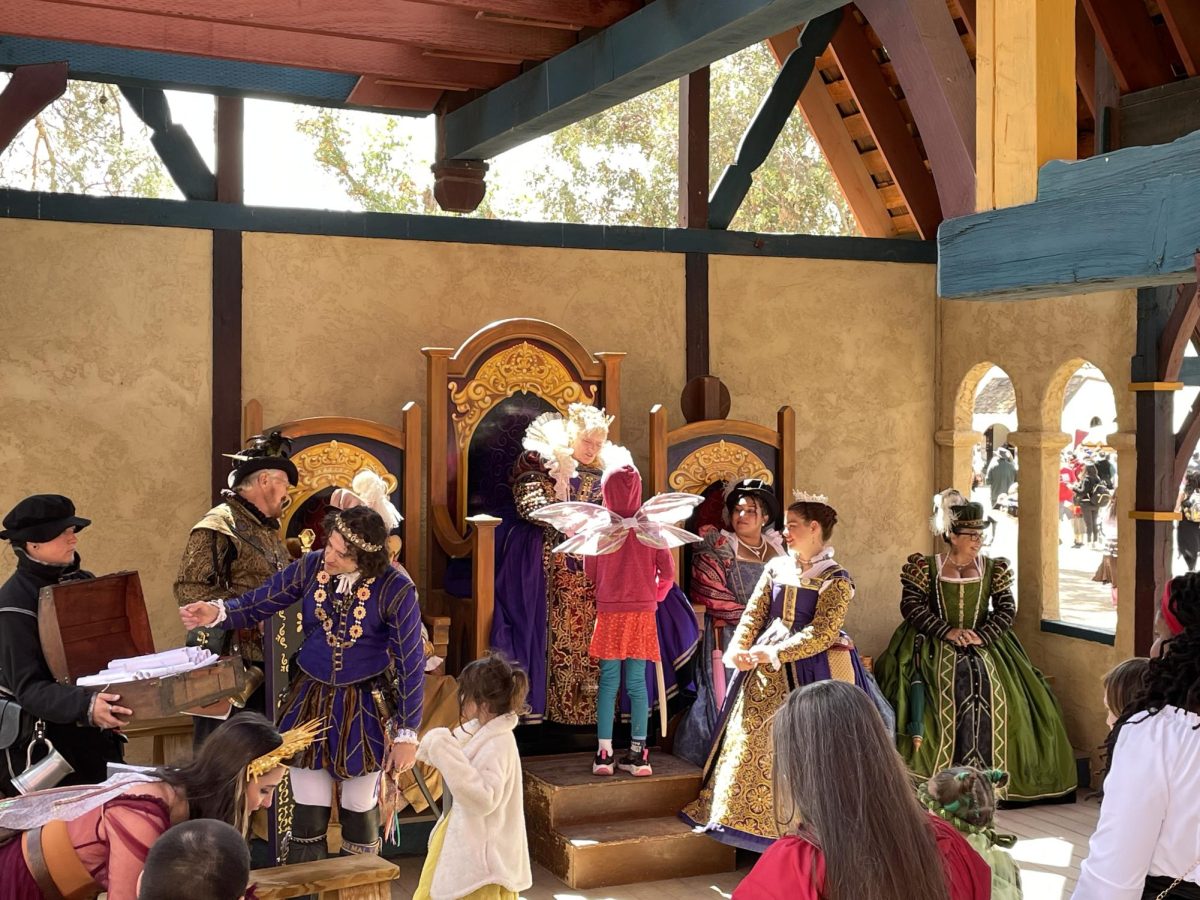On Jan. 22, at 6:30 p.m., Centennial Hall hosted the last showing of the play “Harper Lee’s To Kill a Mockingbird,” play script by Aaron Sorkin and directed by Bartlett Sher. Produced by Broadway In Tucson, the curtains rose and fell for the last time for the cast and stage crew of this production, and I managed to be there for its final showing.
I have simply one word to describe the production: astounding.
For those who have never read the novel or seen the 1962 film adaptation, “To Kill a Mockingbird” is essentially a story that explores innocence, youth, injustices, racism and compassion.
Although relatively the same plot, the play has the story be narrated by the children Scout Finch, Jem Finch and Dill Harris, as they all recount the summer of 1934 in the fictional town of Maycomb, Alabama, where Scout tries to figure out how Bob Ewell really died. Flashing back to that summer, Scout’s and Jem’s father, Atticus Finch, is faced with the task of representing Tom Robinson, a Black man who has been falsely accused of raping a white woman named Mayella Ewell. Flashing between the trial and the children’s attempts to lure out the mysterious Boo Radley from his home, “To Kill a Mockingbird” ultimately gives a glimpse of rural life in the South and the children are ultimately exposed to the harsh realities of the cruelty that their neighbors are capable of and the injustices present in the world.
The play also makes a small adjustment in its pace and focus. Although it sticks true to the events of the novel, the focus of the play is more on Atticus Finch and his growth throughout the play as his ideologies are challenged throughout the duration of the trial. The play also condenses the events of the novel to take place in one summer rather than through the years of 1933-1935.
I had read the book when I was younger for school as well as seen the film, so coming into this theater I had a basic idea of how the plot would unfold. I remember how heart-wrenching it was to read that novel, being unable to fully comprehend the injustice and cruelties that were at play, just like Scout, Jem and Dill. Although framed as a coming-of-age kind of story, the undertones of hate and lack of compassion were heavily prevalent in the novel. I’d expected the play to carry on these undertones, which it surely did, but the play also brought out other emotions out of me that I didn’t expect, like humor.
I am in no way insinuating that the play was completely comedic, for describing “To Kill a Mockingbird” as solely comedy would be completely bizarre. What I meant by humor is that this play, through its dialogue and character interactions, managed to spark a little joy within the audience despite the heavy topics it was exploring. You had Scout, Jem and Dill played respectively by Melanie Moore, Justin Mark and Steven Lee Johnson, embodying the traits of children so naturally (despite them being adults themselves). Through their actions, they managed to incite suspension of disbelief and allowed audience members to relax and be amused by the children’s antics.
Not only did the children provide a sense of comedic relief, but the delivery of lines by the adult characters were also amusing. The humor, in my opinion, came from the ridiculous nature of the lines inciting disbelief in the seriousness of the characters’ remarks. An example that comes to mind includes a scene where the prosecutor Horace Gilmer asked the judge if Tom Robinson’s sworn oath on the Bible could be reliable if he has no feeling in his left hand (since Robinson’s left arm was impaired due to an accident in his youth). Even though the context of this line is beyond insulting and ridiculous, it’s the bizarreness of characters like Gilmer who truly believe in such thought-processes that can’t help but incite laughter.
Even with these humorous moments, the play still maintains a powerful, tough message about people’s capacity for cruelty and the struggles of showing compassion in a world filled with hate. Whether this is shown through the children’s struggle to comprehend the prejudice of their neighbors or through the futility of a trial where the verdict has already been determined. The whole cast did a magnificent job portraying this story on the stage.
Although all of the actors’ and actresses’ performances were phenomenal, there were a few character portrayals that truly caught my attention.
Atticus Finch
Played by Richard Thomas, he is tasked with the job of portraying a character that is relatively beloved amongst the literary and film community. This love for the character was prevalent at the performance I attended for when the character was first brought onto the stage, everyone applauded and cheered. With such high expectations, Thomas did not disappoint viewers.
As I mentioned before, Atticus is perhaps the most compassionate character of the play with a high sense of justice, but it’s that compassion that serves as a major flaw. Because of his compassion, he tends to overlook the behavior of his neighbors, coming up with excuses and trying to see the best in them (despite the obvious ignorance and hate). This ideology of his gets challenged throughout the trial, and Thomas presents the effects of these challenges through his monologues (particularly his closing argument) and his body language. You can see him physically become more worn down as time passes, his ability to defend his beliefs becoming harder and harder. This transition of his character was done so subtly, and that’s what intrigued me the most.
Plus, his interactions with the children truly emitted fatherly affection. Although first appearing atypical as the children refer to their father as “Atticus,” Thomas still managed to capture the fatherly aspect of his character and emit comfort through his words of wisdom. Along with Scout and Jem, we are comforted and encouraged with the knowledge he imparts, which I feel wouldn’t have been possible if it weren’t for Thomas’ stellar and intense portrayal of the role.
Dill Harris
Played by Steven Lee Johnson, he was perhaps my favorite character of the whole play. Johnson truly did play the part of a child extremely well without being overtly distracting or obvious. Probably the most comedic character out of the play, Johnson manages to portray a childhood innocence to Dill as well as illustrate how truly complex of a character he is. Viewers come to find out that there is more to Dill’s character and background that isn’t all sunshine and rainbows. Dill holds the kind of wisdom that most of the adults in Maycomb lack, and Johnson does a great job expressing that wisdom.
What’s also special about this character’s portrayal was how truly real the character felt and that is perhaps due to the fact that the author of the novel most likely based Dill’s character on fellow literary icon Truman Capote, since Lee and Capote grew up as childhood friends in the town of Monroeville, Alabama (which is the town Lee based Maycomb on). The deep friendship of Scout and Dill was powerful in the novel, but it was even more powerful on stage. With Harris’ and Moore’s natural on-stage chemistry, one can easily believe in the realism of the friendship.
Calpurnia
Played by Jacqueline Williams, her portrayal as Calpurnia, the Finch’s housekeeper, was truly powerful. As one of the few Black characters of the play, she did an amazing job portraying a strongly independent, stern and caring woman. The character of Calpurnia serves as a source of realism against Atticus’ optimistic outlook of his community. There is clear chemistry between Atticus and Calpurnia, with Scout even commenting how their relationship was comparable to a brother and a sister. This is all thanks to Thomas’ and Williams’ ability to play off of each other, making their interactions both relaxed and natural.
Calpurnia isn’t afraid to poke holes in Atticus’ ideologies as well as challenge his decisions. She is sarcastic and passive-aggressive. Despite Atticus’ good intentions, Williams’ character highlights the contradictions of the man’s sentiments, especially due to the fact that only she could understand the struggles that Black people endure because she herself deals with those prejudices every day. As much as she cares for Atticus, it is clear to see the anger she feels when Atticus forces the kids to treat people like Bob Ewell and Mrs. Henry Dubose, both clear racists, with respect and understanding. Williams portrays all these aspects of her character flawlessly, making Calpurnia so well-rounded and so much more than a side character. Every word, every gesture, even her silence, speaks volumes and it is something that I truly admired about her.
Along with the plot, the staging and the actors’ and actresses’ portrayals, what astounded me the most was the breathtaking set-design.
Conceived by scenic designer Miriam Buether, there was so much movement involved. While the background frame of the play appeared to take on the appearance of an abandoned, worn out building, the props on the stage were all movable. Audience members could physically watch as the scene transformed before their eyes. One moment, the stage would be designed to look like a courtroom and then the next moment, the stage was set up to look like the porch of Scout’s house.
What was fascinating about these transitions were how natural they felt, how the actors remained in character as they slid benches, bushes and doors while the ceiling lowered down roofs and lights. It felt so fluid. The movement and interactivity of the set served as a powerful storytelling approach. In my opinion, Buether’s design allowed the production to truly insinuate the illusion of the events of the play being memories the children were recounting. The movement of the set represented the children’s transfiguration of events within their mind, with it constantly being in motion.
“To Kill a Mockingbird” is such a powerful narrative. It’s a tale that is sadly so prevalent in today’s society, especially in regard to the bigotry and hatred that engulf so many people’s hearts. Nevertheless, this story manages to highlight powerful messages of hope, integrity and compassion as it inspires people to be their better selves. Thanks to Sorkin transforming this renowned literary work into a play script and Sher bringing it to life, that narrative has continued to thrive and touch so many hearts.
I feel so fortunate to have had the chance to see this play in person and I invite others to see this play if ever given the opportunity. It is a play that will completely surprise you and make you ponder the question, why is it a sin to kill a mockingbird?
Follow Tereza Rascon on Twitter

Tereza Rascon (she/her) is a senior majoring in English. She enjoys reading, writing and watching the latest movies and shows.















